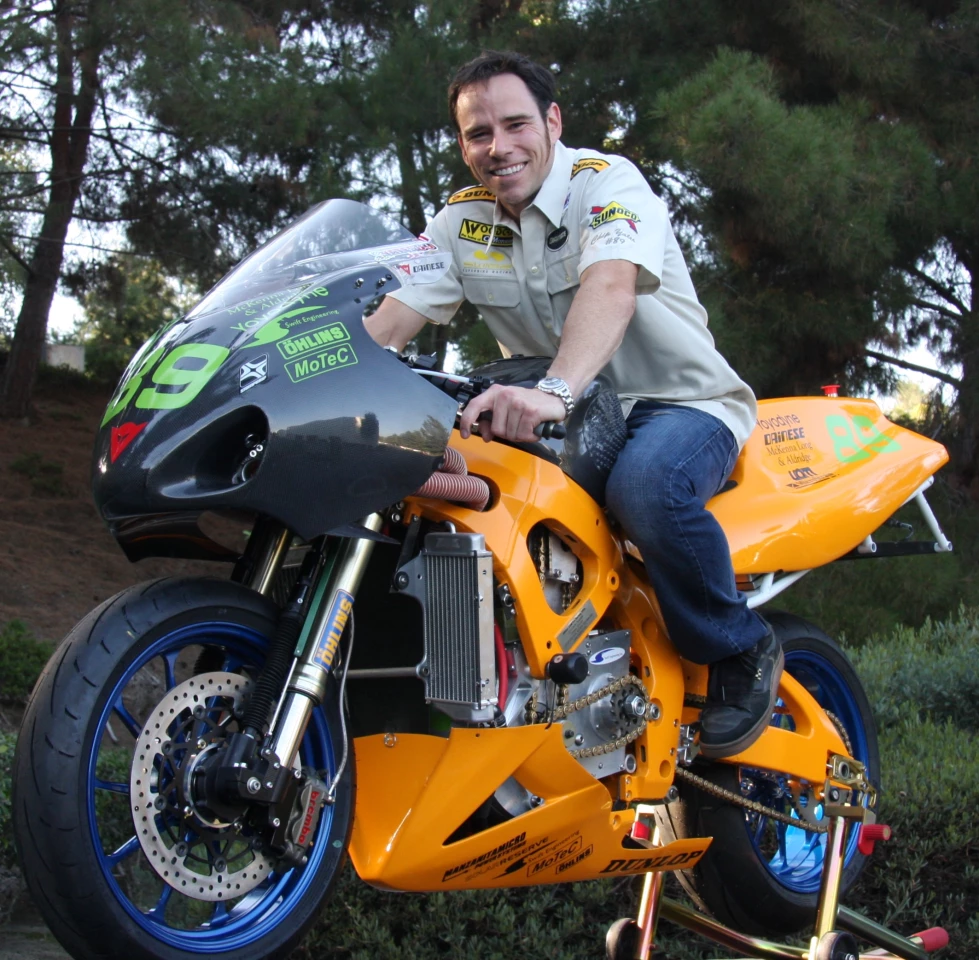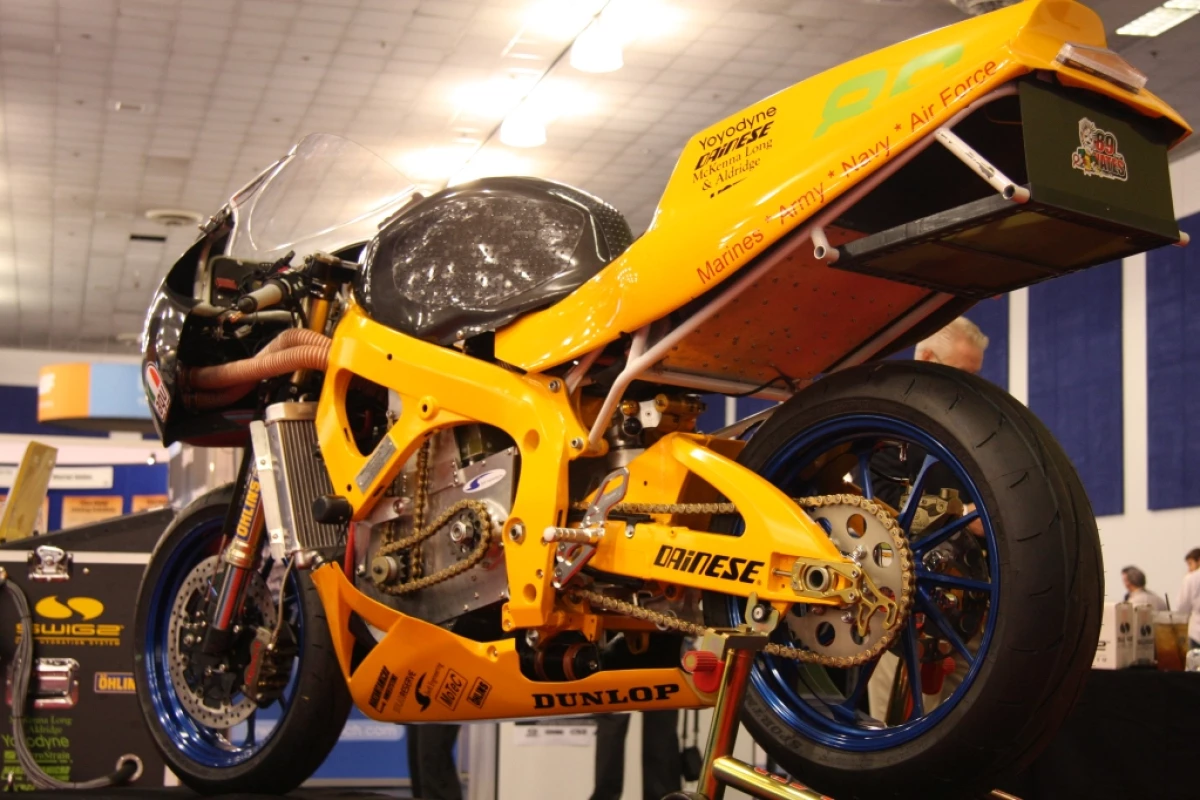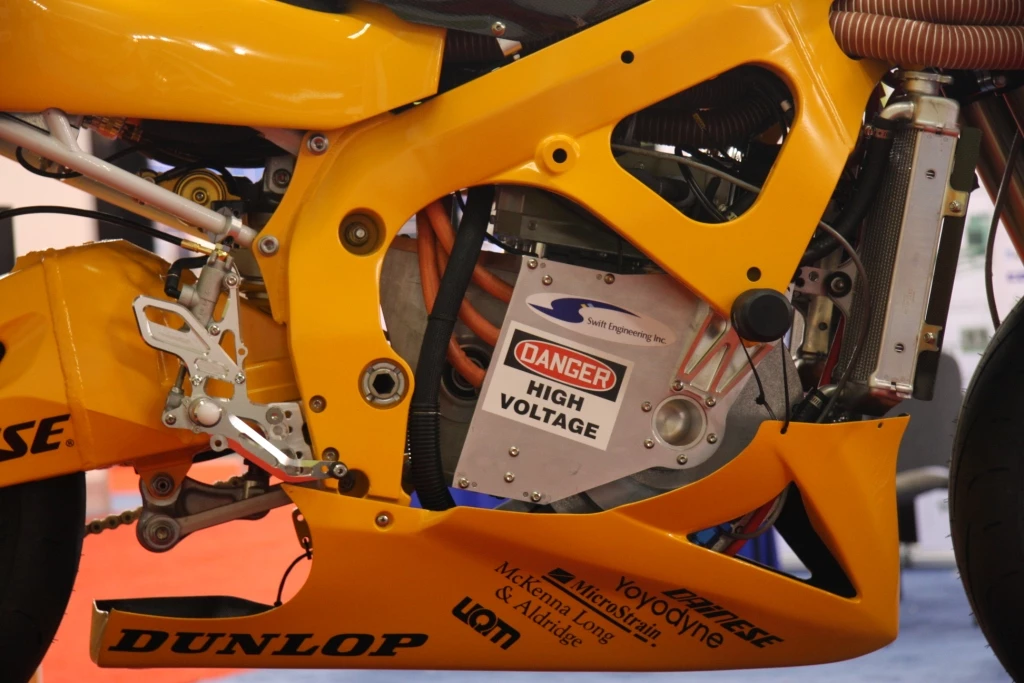Chip Yates took a very American approach when he began building an electric superbike to race in the TTXGP and FIM ePower championships. He went for horsepower. One-hundred and ninety-six horsepower, to be precise, with a massive set of battery cells to keep the motor fed over a race distance. It was to be the most powerful bike on the grid. But both the TTXGP and the FIM released rule changes effectively disqualifying the SWIGZ bike from competition in 2011 - and rather than change the bike to fit the rules, Yates decided to pull out altogether - and take it racing against petrol-powered American superbikes in what is likely to be the first time electric and gasoline-powered motorcycles have gone head to head in an official race. But even with nearly 200 horsepower behind him, Yates has one heck of a tough job ahead of him.
Electric bikes are already highly popular as commuters in many Asian countries - stand on a Shanghai street and count the silent scooters whizzing by, they just about outnumber the petrol bikes. But they haven't really caught on yet in the West, where most riders care more for excitement than efficiency.
The only way electric motorcycles are going to get under the skin of most petrolhead bikers in Western countries is by beating the best of today's fossil-fueled beasts fair and square on the racetrack, proving that they've got enough performance credibility to get the pulse racing like our well-loved gas-burning superbikes.
That's not an easy task though - racetrack lap times have been steadily coming down for at least 115 years now since the first recorded motorcycle race back in 1895 (which was won with an average speed of 7.3 miles per hour, through the snow). Millions upon millions of dollars, and more than a century of research have been spent making petrol motorcycles some of the fastest machines on the planet.
Electric bikes, on the other hand, have only really come onto the radar in the last five years, interest in them driven chiefly by rising oil prices, climate change concerns and the promise of extremely cheap running costs and maintenance-free motors.
There's certainly performance potential there - electric motors are torquey, bulletproof and very scalable; you can develop pretty much any power curve you want, given enough energy storage. And the first few TTXGP races have shown us that the novelty of electric racing can draw a crowd.
But what will it take for a battery-powered bike to compete convincingly against its petrol-powered brethren on the racetrack? Chip Yates, owner of SWIGZ racing, is getting ready to find out as he prepares to be the first electric bike rider to go racing against gasoline-powered big twins on January 11, 2011.

The first electric motorcycle to race against petrol-powered superbikes
Racing in the WERA Pirelli Sportsman Heavyweight Twins Superbike class, Yates has thrown the kitchen sink at what he claims is the world's most powerful and technically advanced electric superbike ever built.
Starting with a Suzuki GSX-R750 frame, Yates modified it to take a 194-horsepower DC motor capable of outputting a massive 400Nm of torque. And if that power doesn't seem excessive enough, Yates is planning a 40-horsepower upgrade in February.
Ohlins and Brembo handle the suspension and braking duties, so it's clear Chip's putting his money where his mouth is when he says "We’re not going on track to make up the numbers; we’re going out to compete in order to raise our game and catch up to these gasoline guys.”
Now for the bad news; to get around a racetrack at full throttle for a 6-lap race, this beast sucks a lot of power, even operating at 94% efficiency. So as usual with an electric, power storage is a key issue. Yates has fitted the bike with no less than 102 onboard battery cells, storing a total of 11.5 kW h between them, which is topped up during braking with a KERS system.
That's enough batteries for a full race - but they come at a heavy price. The bike weighs a gargantuan 266 kg. It packs enough power to be middle of the pack in the division it'll be racing in terms of power-to-weight - and the February upgrade will put it up at World Superbike levels of straight-line acceleration - but Yates is surely going to struggle wrestling an extra 100 kg through the corners compared with his lightweight petrol-powered adversaries such as the Ducati 1198 and KTM RC8.
Giving TTXGP and the FIM an electric finger
In fact, the bike's weight is the primary reason why he's racing against petrol bikes in the first place. Both the FIM ePower and TTXGP electric motorcycle racing championships have introduced a 250kg maximum weight limit for 2011. Both competitions knew the weight of the SWIGZ bike before they made their rule changes, charges Yates.
The TTXGP organizers claim the rule change was in order to keep costs reasonable and level the playing field for more exciting racing in the infancy of the electric age. Either way, Yates is certainly not happy about it: “Clearly, these championships are more concerned with promoting scooter development, and our bike is so much faster than the electric competition that we feel far more inclined to push our bike’s unique technology platform forward in the ultimate competitive environment of gasoline bike racing.”
There's no doubt that the SWIGZ bike will be crazy fast for an electric bike - but at the ragged edge, will Chip Yates be able to ride around the bike's huge weight handicap and find a way to be competitive? As an AMA Pro-level racer, he certainly knows his way around a bike.
We'd love to know what his lap times have been like in testing, compared with the rest of the field. Petrol and electric bikes will certainly be facing off on track a lot more in the future, so whatever happens when the flag drops on January 11, we salute Yates and the officials who let him race for their foresight. Best of luck, Chip!
Meet Chip and the team (before their dreams were shattered) in the video below:







